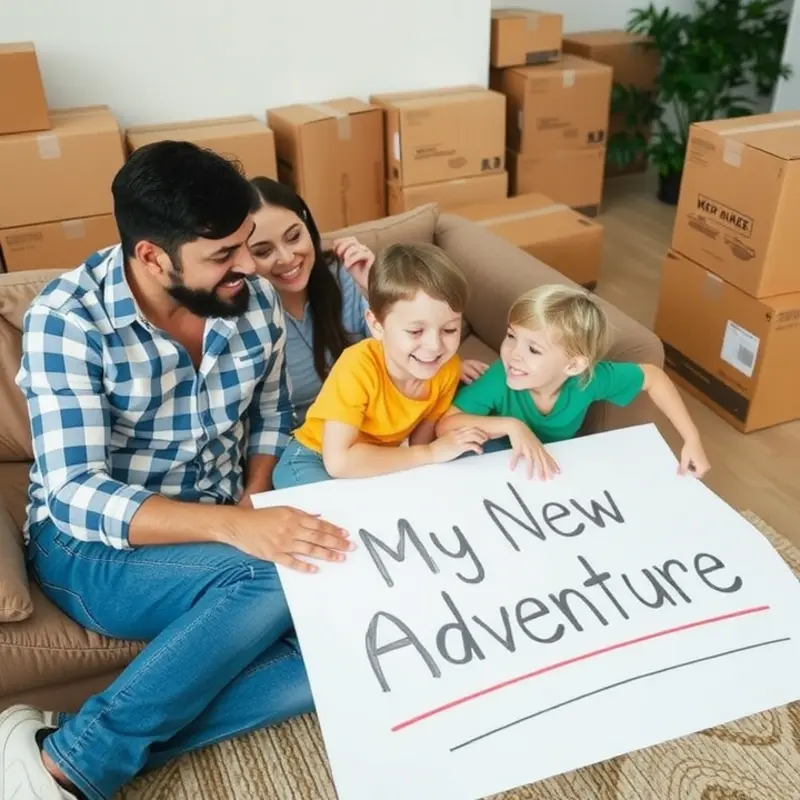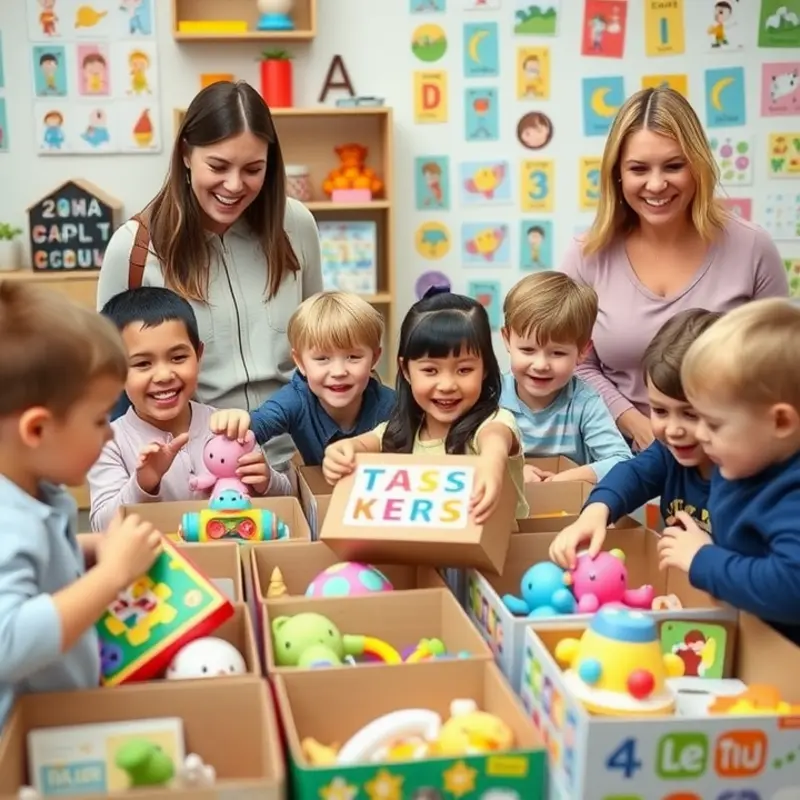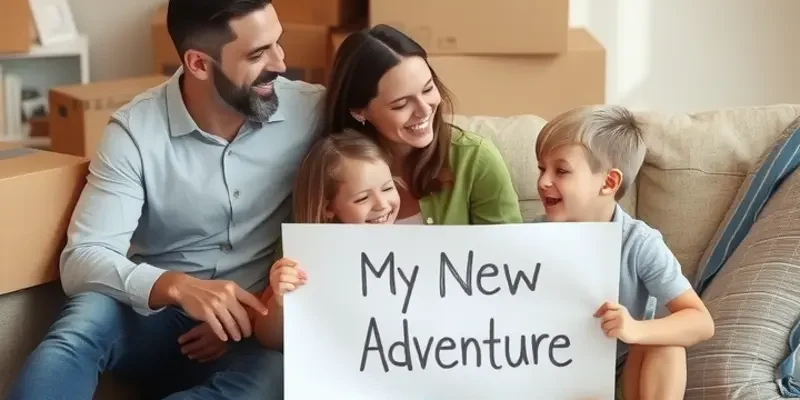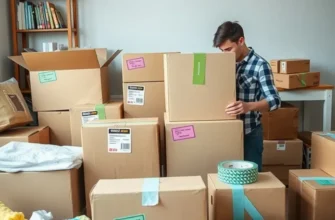Packing up your life and relocating can feel like preparing for a space mission. You need to strategize, gather supplies, and remind everyone not to touch the launch button until the final countdown. For families, moving can be tricky, especially when children are involved. Suddenly, it’s not just about new walls and paint colors; it’s about helping kids navigate their emotions and understand what a move means for them. Whether it’s the excitement of a new room or the fear of leaving their friends behind, it’s essential to equip your little astronauts with the right tools to make this journey more manageable. Let’s explore how to turn moving from a major source of anxiety into an exciting adventure for the whole family, complete with strategies, tips, and maybe a few laughs along the way.
Understanding the Emotional Impact of Moving

Moving can feel like a whirlwind of activity, packing up a life and setting it down somewhere new. For children, however, it’s not just a logistical challenge; it’s an emotional journey that can significantly impact their well-being. Kids might not always verbally express their feelings, but understanding their perspective is crucial.
For many children, the idea of moving conjures up feelings of fear, sadness, and anxiety. The thought of leaving a familiar home, neighborhood, or school can be overwhelming. They are saying goodbye to environments and people that provide comfort and stability. Children might worry about making new friends or fitting into a new school. These fears are entirely normal, but they require attention and understanding from parents.
Younger children, in particular, might struggle to understand the reasons for moving. They tend to be more attached to their routines and environments. On the other hand, older children and teenagers might be more focused on their social circles. They could feel resentment about being forced to leave friends behind and start over.
To help children cope with the emotional impact of moving, consider implementing age-appropriate strategies. Creating a scrapbook together can serve as a comforting way to preserve memories from their old home. Let them capture images and notes about their favorite spots or activities they enjoyed. This tangible keepsake can provide a sense of continuity and reassure them that their past experiences remain part of their story.
Involving children in the moving process can also offer them a sense of control during this time of change. Engage them in discussions regarding aspects of the move, like choosing their new room’s decor. Allowing input into the move can empower them, reducing feelings of helplessness that might come with such a significant transition.
Furthermore, organizing small “goodbye” events with friends, such as playdates or small parties, can provide closure. Commemorating current friendships in a positive light sets the stage for nurturing new ones.
For more tips on easing your child’s transition into a new environment, consider focusing on practical aspects like settling them into the new home. Small adjustments and inclusions, such as apartment-friendly aromatherapy tips introducing gentle soothing scents, can make their new environment feel comforting and inviting.
Ultimately, understanding and validating the emotions of your children during a move can make a world of difference. By acknowledging their feelings and providing supportive strategies, you can help smooth the emotional journey of relocation, paving the way for a positive new beginning.
Making the Move Exciting: Fun Ideas for Kids

Transforming moving day into a source of excitement for kids requires a touch of creativity and a splash of adventure. It’s crucial to engage them in the process, turning what can be a stressful event into a thrilling activity.
1. Turn Packing into a Game
Packing doesn’t have to be a mundane chore. Introduce a point system where kids earn points for packing certain items quickly. Challenge them to fill a box the fastest or create the most organized box, with a small prize for the winner. This method not only helps in getting the packing done but also motivates children to participate enthusiastically.
2. Moving Scavenger Hunt
Create a scavenger hunt where kids search for small, hidden treasures around the house. These could be favorite toys, new books, or even photographs that remind them of happy memories. As they find each item, they can pack it safely in a special “treasures” bag. This game not only adds excitement but also offers a way to reminisce and appreciate the time spent in the old home.
3. Old and New Friend Playdates
Setting up playdates with old friends offers a sense of closure. It allows kids to say goodbye meaningfully. At the same time, organizing virtual playdates with prospective neighbors can help build a comfort zone before they step into their new environment. Socially active and connected children tend to adjust faster to new surroundings.
4. Embark on a Room-Personalizing Adventure
Involve your kids in deciding how their new bedrooms will look. Let them choose paint colors or themes. Perhaps they could have a corner dedicated to their favorite activities, like reading or crafting. Allowing them autonomy in designing their space gives them something exciting to look forward to and makes the new house feel like home. For more ideas on personalizing spaces, you can explore DIY Apartment Makeup Organizers.
5. Document the Journey
Equip your kids with a simple camera or use a smartphone to document your moving journey. Encourage them to capture memorable moments, which they can later assemble into a scrapbook. This activity prompts them to focus on the positive aspects of moving and creates a lasting memento.
Approaching the moving process as a family-centered adventure not only eases the transition but also fosters bonding. By implementing these strategies, you can transform an intimidating experience into a joyful chapter of your family’s story.
Final words
Moving with children doesn’t have to be a circus act. With understanding and creativity, parents can transform the experience into an adventure that fosters resilience and excitement. By helping kids process their feelings, involving them in decisions, and creating fun activities around the move, you can make this transition one that they will remember fondly. So, roll up those sleeves, unleash the creativity, and embark on this new chapter with your family—and don’t forget the snacks for the journey!









